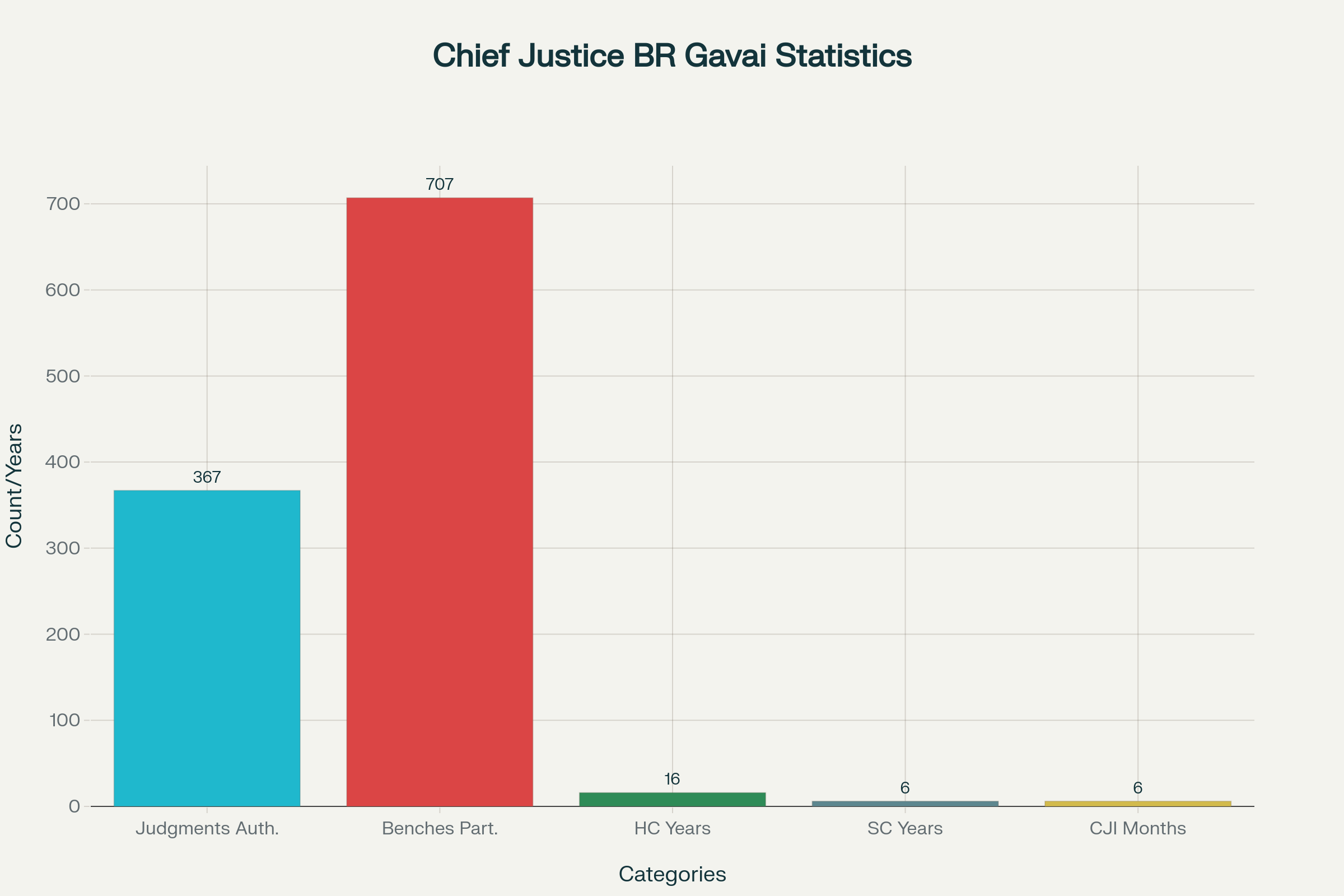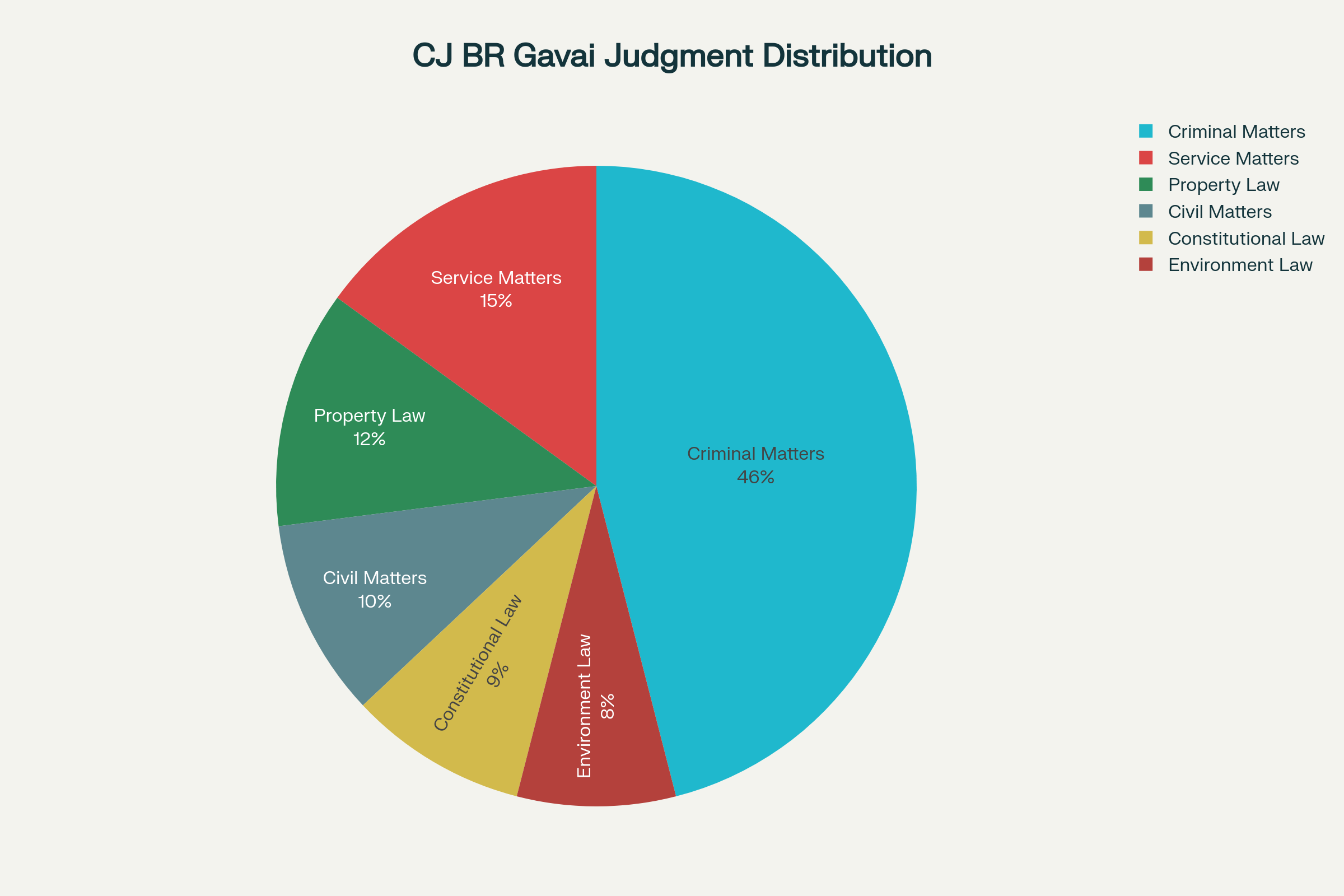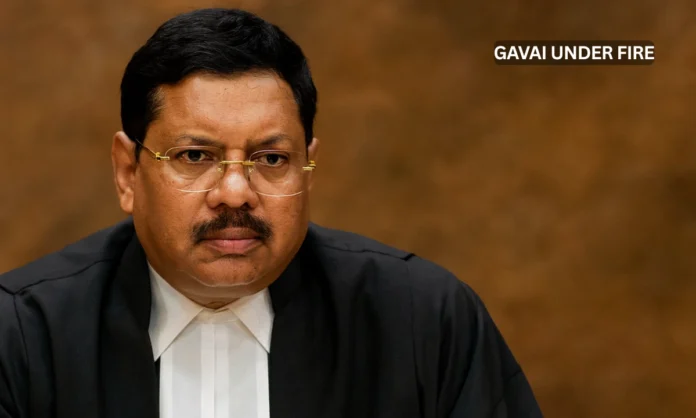Key Highlights:
- Chief Justice BR Gavai clarifies “I respect all religions” after social media backlash over his remarks during Khajuraho temple idol case hearing
- Supreme Court dismissed petition to restore seven-foot Lord Vishnu idol, citing Archaeological Survey of India jurisdiction over UNESCO World Heritage site
- Senior legal officials defend Chief Justice BR Gavai while highlighting disproportionate social media reactions to judicial proceedings
Opening Overview
Chief Justice BR Gavai finds himself at the center of a nationwide controversy after his September 17 remarks regarding a damaged Lord Vishnu idol restoration case triggered unprecedented social media backlash. The Chief Justice BR Gavai controversy erupted when he told a petitioner seeking restoration of a beheaded deity statue to “go and ask the deity himself to do something” during a Supreme Court hearing. Social media platforms immediately amplified criticism, with hashtags demanding Chief Justice BR Gavai impeachment trending across digital platforms and legal practitioners writing protest letters.
The Chief Justice BR Gavai religious remarks case has exposed the complex intersection of judicial authority, religious sentiment, and social media influence in contemporary Indian legal proceedings. As the 52nd Chief Justice of India and the first Buddhist Chief Justice in Indian history, Chief Justice BR Gavai’s position carries additional significance given his groundbreaking appointment representing marginalized communities.

Chief Justice BR Gavai’s Judicial Career Statistics and Milestones
Supreme Court’s Jurisdictional Stance on Heritage Temple Restoration
The Chief Justice BR Gavai-led bench dismissed the petition filed by Rakesh Dalal, who sought reconstruction and consecration of the damaged seven-foot Lord Vishnu idol at Javari Temple within the Khajuraho temple complex in Madhya Pradesh. The Archaeological Survey of India maintains jurisdiction over 3,697 centrally-protected monuments and sites across India, including the UNESCO World Heritage Khajuraho Group of Monuments. Chief Justice BR Gavai ruling emphasized that temple restoration matters fall squarely under ASI’s authority rather than judicial intervention, stating “It’s an archaeological find, whether the ASI would permit such a thing to be done or not”.
The Khajuraho temple complex represents the pinnacle of Chandella dynasty architecture from 950-1050 CE, with only 23 surviving temples distributed across three clusters covering six square kilometers. Chief Justice BR Gavai’s decision aligns with established legal precedent that Archaeological Survey of India holds exclusive conservation authority over centrally-protected heritage sites under the Ancient Monuments and Archaeological Sites and Remains Act, 1958. Throughout his judicial career, Chief Justice BR Gavai has authored 367 judgments and participated in 707 benches, demonstrating extensive experience with jurisdictional matters.
| ASI Monument Conservation Statistics | Data |
|---|---|
| Total Protected Sites Under ASI | 3,697 monuments nationwide |
| Khajuraho Temple Complex Area | 6 square kilometers |
| Surviving Temples at Khajuraho | 23 structures (20 fully intact) |
| Construction Period | 950-1050 CE Chandella Dynasty |
Social Media Backlash and Digital Age Judicial Challenges
The Chief Justice BR Gavai controversy demonstrates the unprecedented scale of social media reactions to judicial proceedings in modern India. Solicitor General Tushar Mehta observed during court proceedings that “every action has a disproportionate social media reaction,” highlighting the amplified nature of digital criticism compared to traditional judicial commentary. Chief Justice BR Gavai social media backlash included demands for impeachment, accusations of mocking Hindu faith, and widespread circulation of partial court transcripts that lawyers argue misrepresented the actual proceedings.
Supreme Court has expressed growing concern about social media misuse regarding pending judicial matters, noting that distorted information constitutes interference with judicial proceedings. Chief Justice BR Gavai case exemplifies how legal reasoning gets overshadowed by inflammatory social media interpretations, with the jurisdictional basis of the decision receiving minimal attention compared to perceived religious insensitivity. Legal experts indicate that judicial remarks taken out of context through social media platforms create disproportionate controversy that undermines the authority of courts and interferes with justice administration. Chief Justice BR Gavai’s extensive judicial experience, spanning 16 years at Bombay High Court and 6 years at the Supreme Court, provides crucial context for understanding his legal reasoning approach.

Distribution of Chief Justice BR Gavai’s Judgments by Legal Subject Areas
Religious Sensitivity and Judicial Clarification Response
Chief Justice BR Gavai’s clarification came during a Karnataka illegal mining case hearing, where he addressed the mounting criticism by stating “I respect all religions” and explaining that social media had portrayed his comments inappropriately. The Chief Justice BR Gavai religious tolerance statement received support from senior legal practitioners who vouched for his reverence toward all religious places and communities throughout his judicial career. Advocate Vineet Jindal and lawyer Satyam Singh Rajput wrote formal letters expressing concern that the remarks hurt Hindu sentiments, while emphasizing the need for judicial dignity in matters of faith.
Chief Justice BR Gavai Nepal comparison during his clarification referenced similar social media controversies in neighboring countries, suggesting a regional pattern of religious-judicial tensions amplified through digital platforms. Senior Advocate Kapil Sibal characterized social media as “an unruly horse” that cannot be tamed, acknowledging the challenges facing judicial institutions in the digital age. Chief Justice BR Gavai clarification represents a rare instance of a sitting Chief Justice directly addressing public criticism, highlighting the unprecedented nature of social media-driven judicial controversies in Indian legal history. As the second Dalit Chief Justice in India’s 75-year history and the first Buddhist to hold this position, Chief Justice BR Gavai’s religious understanding brings unique perspective to interfaith judicial matters.
| Key Legal Figures’ Responses | Position |
|---|---|
| Solicitor General Tushar Mehta | Defended Chief Justice BR Gavai, citing 10-year professional relationship and religious reverence |
| Senior Advocate Kapil Sibal | Described social media as “unruly horse” requiring regulation |
| Advocate Vineet Jindal | Wrote protest letter requesting withdrawal of remarks |
| Lawyer Satyam Singh Rajput | Called for reconsideration of comments affecting Hindu sentiments |
Closing Assessment
The Chief Justice BR Gavai controversy reveals the complex challenges facing India’s judicial system in navigating religious sensitivity within an increasingly connected digital landscape. While the Supreme Court’s jurisdictional ruling regarding Archaeological Survey of India authority over heritage temple restoration follows established legal precedent, the amplification of perceived religious insensitivity through social media platforms has created unprecedented pressure on judicial institutions. Chief Justice BR Gavai religious tolerance clarification demonstrates the delicate balance required between maintaining judicial independence and acknowledging public sentiment in contemporary legal proceedings.
This incident underscores the need for more nuanced understanding of how digital platforms can distort judicial reasoning and the importance of protecting institutional authority while respecting diverse religious communities across India’s pluralistic society. Chief Justice BR Gavai’s historic appointment as the first Buddhist and second Dalit Chief Justice adds constitutional significance to his role in addressing religious sensitivities within India’s diverse judicial framework.


